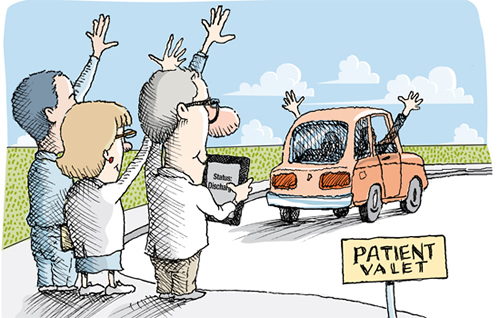Traditional medical research develops a new drug, vaccine, treatment, or protocol, then tests whether it is effective.
By contrast, health services research (HSR) looks at the broad picture of health outcomes, delivery, policies, education, and practice. The basic HSR question is, How can we craft real-world strategies that get the right care to the right people (including the most vulnerable) at the right time, and do it without breaking the bank? It combines clinical information with behavioral, cultural, economic, social, and other factors in health care processes and delivery systems. In an era of increasingly stringent cost containment, this emphasis on the highest quality possible within a given amount of resources makes HSR one of the hottest, fastest-growing research areas not only at Emory but also in the nation.
What We Know about Cardiac Screening
Cardiovascular disease (CVD) is the biggest cause of death worldwide, and it's a sneaky one. For most people, severe atherosclerotic plaque develops before any symptoms appear. For some, the first symptom is the heart attack that kills them. A number of tests are effective in detecting pre-symptomatic heart disease, but routine testing beyond measures of blood pressure and cholesterol is currently not considered medically necessary and therefore not covered by Medicare or other payers.
Opponents of nationwide screening worry that one test would lead to another, then another, creating needless anxiety and early, lifelong patterns of higher resource consumption. Put simply, the costs of screening asymptomatic individuals might well outweigh the benefits. Or not. Little meaningful information has existed on real-world resource consumption patterns and health care costs following CVD screening in people without symptoms. Until now.
It was a question made for Emory medicine professor Leslee Shaw, who co-directs the Emory Clinical Cardiovascular Research Institute. Funded by the National Heart, Lung, and Blood Institute, Shaw's research analyzed data from more than 6,000 middle-aged and elderly men and women of diverse ethnicity from geographic regions across the United States, who underwent different screening tests for CVD. (Like most HSR researchers, she seeks new information in the combination and re-analysis of pre-existing studies, making HSR a funding bargain.)
First, Shaw looked at the cost and use of specific tests, projecting clinical outcomes and economic implications for screening all adults over 55. The test that provided the most information for the least amount of money was obvious, even if not what might have been expected, says Shaw. Inflammation has been getting much of the research buzz, recently. It accelerates atherosclerotic buildup, and several clinical trials have investigated the clinical benefit of statin drugs to reduce inflammation and thus risk. But as a one-time screening test, inflammation is problematic. Forty percent of adults have elevated inflammation, and levels can vary, temporarily rising, for instance, if one has a cold. Other non-cardiac specific tests, such as carotid artery thickness or peripheral artery blood pressure, also were less than optimal in identifying heart disease.
A simple coronary calcium scan proved to be the most effective in identifying cardiac risk in populations for the least amount of money. The scans look for calcifications (specks of calcium) in coronary artery walls, providing an early sign of plaque buildup and increased risk for heart disease over the next two to 10 years. The one-time, 10-minute test is relatively inexpensive, and it is noninvasive, requires no contrast dyes, and produces no more—and often less—radiation than annual environmental exposure.
Shaw's next action step is to present her findings to the U.S. Preventive Services Task Force, which sets the rules for what screening tests Medicare and other payers must cover.


